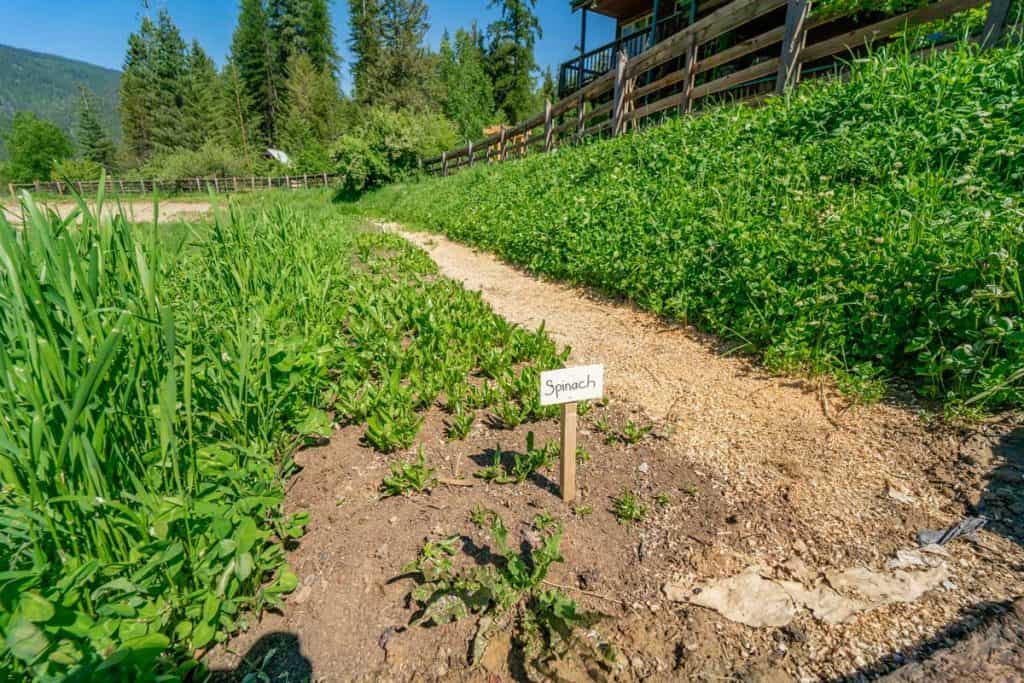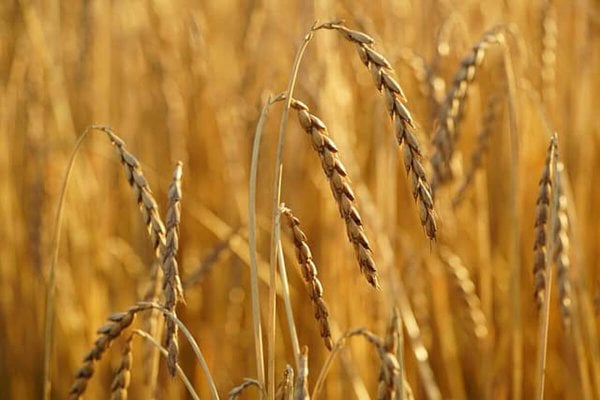

Living on a homestead, it’s important to have systems that make living this lifestyle doable and realistic. But often, perfection gets in the way of “good enough.” In this post, I’ll share some of the things I’ve learned from some other homesteaders, like Joel Salatin and Justin Rhodes that have really improved functionality here at Riverbend.

You see, I am a perfectionist, I admit it! I like everything just right. But something I learned from Joel Salatin years and years ago is that “good enough is perfect.” Woah, that kinda rocked my world!
If you’ve ever seen our main crop garden, you’ll know that I love order and perfection. This “good enough is perfect” motto has been a struggle because I’m a “perfect is good enough” kind of guy. I like everything dialed in.
But if you’re longing for perfection on a homestead, you’ll spend all your time making things pretty and you won’t be building resilience. You’ll also have many more failures because your attention will be on perfection rather than the goodness and production of a farm.
If you’re a part of our Homesteading Family Membership, you may have caught the farm tour that we did not long ago. In this video, we talked about the systems we put in place that make this life doable.
Those systems are valuable, and we’ve learned this the hard way over our 20 years of homesteading. Sometimes we got started ahead of our systems and ended up tripping over everything and having every kind of calamity.
Other times we’ve been slow to act because we either didn’t have the money or didn’t put the importance on the system to merit the money spent in getting that system in place.

Water Systems
For a few years now, we’ve struggled to get pasture to grow in the lower front portion of our homestead. We have water on our property, but I never put the systems in place to utilize it and make getting water to these pastures easy.
This year, after some encouragement from Justin Rhodes and Joel Salatin, we finally invested in getting water from our ponds and spring using a pump, hoses, and a little gravity. This brought water more easily to the grass AND the animals.
Oh, how I hate carrying water… or nowadays should I say how my boys hate carrying water… or did, that is.
The next step in utilizing our water is to use that water well. We water early in the morning and late in the evening when the sun isn’t shining, and the wind has died down.
This means more water gets to the ground, thus the plants, and less wasting water due to evaporation and wind. (Here’s more information on our farm watering system at Riverbend.)

Rotational Grazing
We haven’t fenced everywhere yet, and never will. I don’t think Joel has any permanent fence, but on the perimeter of his property, but what we have done has allowed us to use both permanent and portable fencing to turn our pasture into rotational paddocks.
We have the sheep, chickens, turkeys, and geese out on the pasture, rotating them to new grass daily to promote the healthy growth of the pastures and the animals.
We used a close wire netting for our exterior pasture fence line with an electric top wire, allowing us to tap into that power to run portable electric fencing wherever and whenever we need to.

Sheepshaw
I recently spent a week with Justin Rhodes at his property in North Carolina and learned a lot from how he runs his homestead. One of the things he introduced me to was the Sheepshaw. Now, I had seen it in video, but being there, helping move it, I saw some advantages right away!
Animals need shade, especially if you’re grazing them in open pasture. Animals also need access to minerals. The sheepshaw has both!
I made mine a little larger than Justin’s. My sheepshaw is 10×20 feet to accommodate a few more animals, but it’s still very lightweight and easy to move. It has two places to hold minerals, you can see that in the video (we use Thorvin Kelp and Redmond Real Salt for animals).
We’ve fed those two minerals to our livestock for 17 years now and have always had very healthy animals with minimal issues.

Chickshaw
Raising backyard chickens (whether meat chickens or egg-laying chickens) can be done on any scale. I love using our Idaho A-Frame chicken tractors to allow our chickens to restore our land while keeping them contained.
The a-frame tractors are great, they’re a design I came up with, spun off a Joel Salatin chicken tractor design. I wanted something that would allow me to walk inside the chicken tractor to get out of the elements and a roof that would allow snow to slide off (all things important to us here in North Idaho).
One thing I haven’t liked about the enclosed chicken tractors is that it doesn’t allow the chickens to completely free-range. Sure they’re still getting plenty of bugs, but I wanted to give them the freedom to roam a bit more, be a little more, you know, chickeny.
This is where Justin Rhodes’ Chickshaw design comes in very handy. There’s still a space for them to get out of the elements and get protection from overhead predators, but they can come and go as needed. The Chickshaw is much lighter to move as well.
I do keep them in lanes and keep a net behind them so they cannot go back to the area they have previously been. Check out the video for a visual on this.

Minimize Impact on the Land
While having the animals out in the pasture meant we were utilizing and fertilizing the land more, we are also moving a lot more feed daily. Not only was this impacting the land with the tractor driving on it daily, but it was also using unnecessary manpower and gasoline to haul the feed.
What kind of system can we come up with?
To remedy this (see the photo above), we now use a pallet and a couple of 50-gallon barrels we fill up once a week and move back and forth with the tractor.
As we plan to increase our pastured chicken production, we are going to move to a wheeled system on a pallet that can hold a 1/2 ton of feed which will last a couple of weeks at that point.
Less negative impact, less work. We shouldn’t even need to take the tractor out there at that point.
No matter what scale you’re homesteading on, I encourage you to take a look at your systems. Take a look at the daily tasks that fill your time and ask yourself if there’s anywhere you can make your systems work better for you.
Can you create more efficiency, with fewer steps, literally? It’s worth it, even when it has some upfront cost. It will save you a lot of time and money in the future. Trust me, I’ve done things the hard way, way too long in the name of saving money, yet I didn’t.
To sum it up, don’t put your time and resources into making a picture-perfect homestead, running around trying to make it all look good. Create systems, spend some money on those systems if you can, or save up until you can, making the most with what you have in the meantime.
Make your homestead work for you. It will be good enough. And good enough is indeed perfect!

More Posts You May Enjoy
- Preparing the Homestead for Winter
- Traditional Skills Summit
- Our Homestead Journey (Apartment to 40 Acres)
- How to Get Started Homesteading
- 7 Things You Must Do On Your New Homestead
- 8 Things You Need to Know When Buying Homestead Property
- How to Pivot When Things Go Wrong on the Homestead
- Building Resilience with Justin Rhodes


















